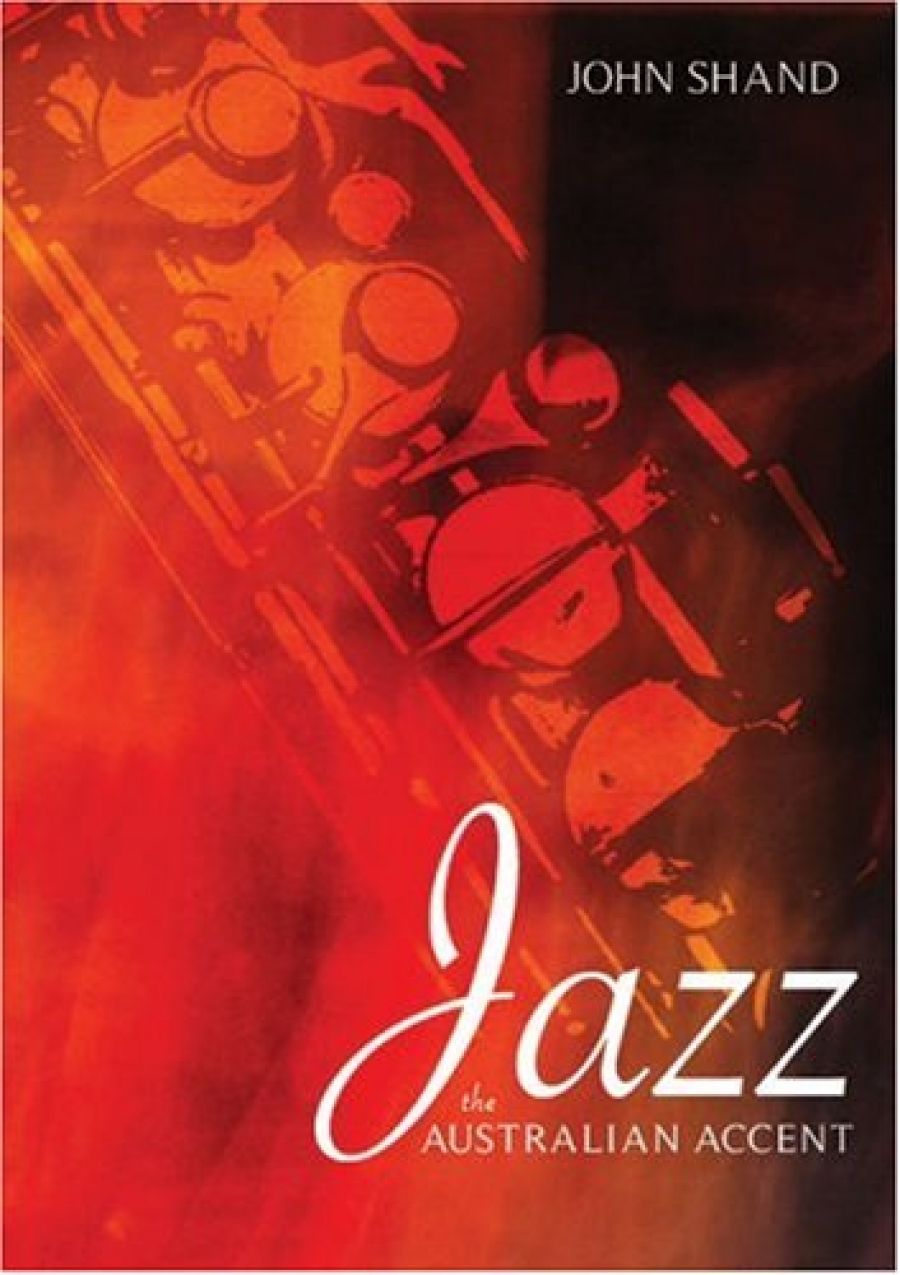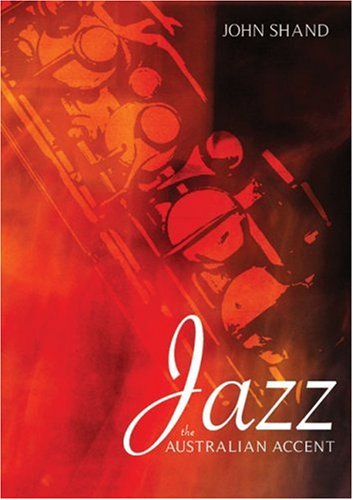
- Free Article: No
- Contents Category: Music
- Review Article: Yes
- Article Title: Emotional Jazz
- Online Only: No
- Custom Highlight Text:
On paper, jazz critic John Shand’s Jazz: The Australian Accent is a welcome intervention, one of the first books to take Australian jazz seriously. Shand’s prose is well paced and easy to read, if slightly glib. There is little obfuscation in his method, which is infinitely preferable to the pretensions of many jazz critics who fail to translate jazz into prose. Shand’s descriptions of music are engaging enough to make you want to listen to the musicians whose work he is describing, if only to confirm or deny the mutedly rhapsodic element of Shand’s descriptors. Unfortunately, they generally don’t live up to his prose, which you’ll discover when listening to the compilation CD that accompanies this book.
- Book 1 Title: Jazz
- Book 1 Subtitle: The Australian accent
- Book 1 Biblio: University of New South Wales Press $34.95 pb (plus CD)
- Book 1 Cover Small (400 x 600):

- Book 1 Cover (800 x 1200):

Shand sets out the parameters of his project in the preface, where he delineates his interest in, and focus on, particular musicians, rather than a blind sweep of the history of Australian jazz. Shand, unashamedly more interested in a particular stream of Australian jazz, traces the stories of key figures such as Mike Nock, Bernie McGann, Scott Tinkler and The Necks, using these mappings of history to elucidate the priority and robust creativity of Australian jazz. This is all well and good, though the relationship between this claim, and the book’s reductive title, is problematic. Readers could easily come to Jazz: The Australian Accent expecting pure history and be frustrated by Shand’s focus.
While Shand’s introductory history of jazz is brief by necessity, it feels blithe and malnourished, including such unhelpful generalisations as, ‘Of course the music was a bastard rather than a pure breed from its inception. What else could you expect from an art form invented in brothels?’ A small chapter on improvisation is similarly misjudged, including such no-brainers as ‘improvisation is essentially a musical conversation’, giving scant attention to approaches to improvisation that run counter to the traditional ‘call-and-response’ model. Parallel, laminar and juxtapositionary models receive a paragraph, which is misguided, given that some of these approaches are the primary focus of The Necks, one of Shand’s case studies.
Even more problematic is what Shand is looking for in the music. Early in the book he claims, ‘I place the highest premium on the emotive quality of the music made.’ But this is the most ‘usual’ element of music writing, an evaluation based on some nebulous ‘emotional’ quality inherent in the performance, privileged for no other reason than that the author felt moved by a record or concert. This mode of listening is overprescribed in discussion of music, particularly when compared to analytical and theoretical approaches to text, art and film. Placing the ‘highest premium on the emotive quality of the music made’ is probably the least likely approach to say anything new or interesting about the music being created – it is pure subjectivity without analytical rigour. Neither do the book’s drier sections of music theory and analysis illuminate anything particularly earth-shattering for a wider audience. There are pockets of engaging thought, but Shand needed to achieve a finer balance between his love for the music and critical acumen.
These ‘threads of glibness’ start to compound the further you delve into Jazz: The Australian Accent, with Shand writing unsubstantiated, non-reflexive things such as, ‘Obviously music is a more powerful experience live than in facsimile form on disc’. You can construct a clear profile of his tastes, aesthetic and politics from these asides. They contribute to the major flaw in Jazz: The Australian Accent: a lack of hard-edged criticism of both socio-economic issues and aesthetic mores. A section on women in Australian jazz runs to two pages – compare this to Valerie Wilmer’s As Serious As Your Life: The Story of The New Jazz (1977), perhaps the seminal text for clear, engaged writing on free jazz, where discussion of women in American free jazz takes up one finely written chapter of polemic and politic.
Shand also appears out of touch with modern ‘underground’ movements in jazz and improvisation. It is strange to read a section on jazz ‘firebrands’ that doesn’t address Anthony Pateras in detail, Sydney’s Now Now festival or the geographically dispersed scene of relatively young players such as Matt Earle, Adam Sussmann, Peter Blamey and Anthony Guerra, who take ‘free improvisation’ as an imperative, not a genre designation, and cross jazz and improvisation with electronics, rock and minimalism.
This gaping hole undoes Jazz: The Australian Accent, even as Shand reinforces his interest in a small clutch of musicians. If you are committed to jazz as forward-thinking and ‘firebrand’, The Necks and Scott Tinkler don’t cut it anymore. Consider this book an opportunity grasped (for the insight gleaned from specific musician’s profiles), but also squandered (for its comfort with navel-gazing aesthetics).


Comments powered by CComment